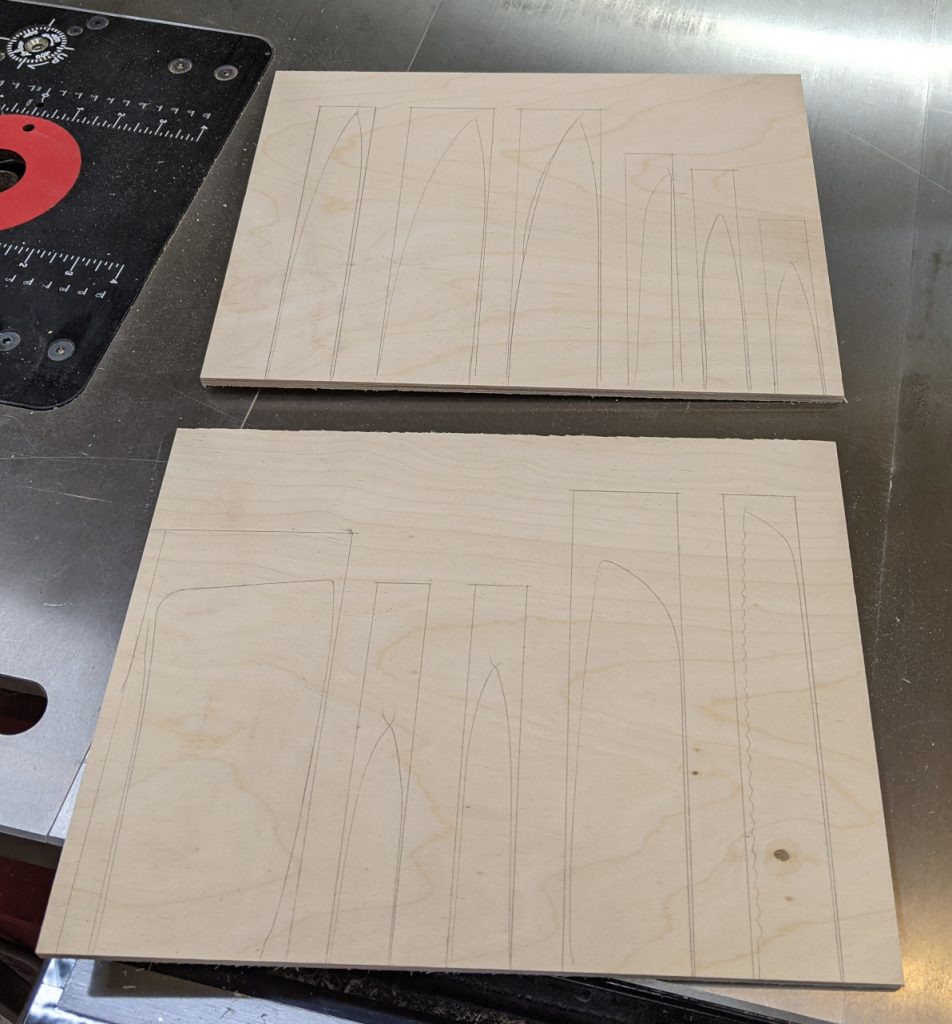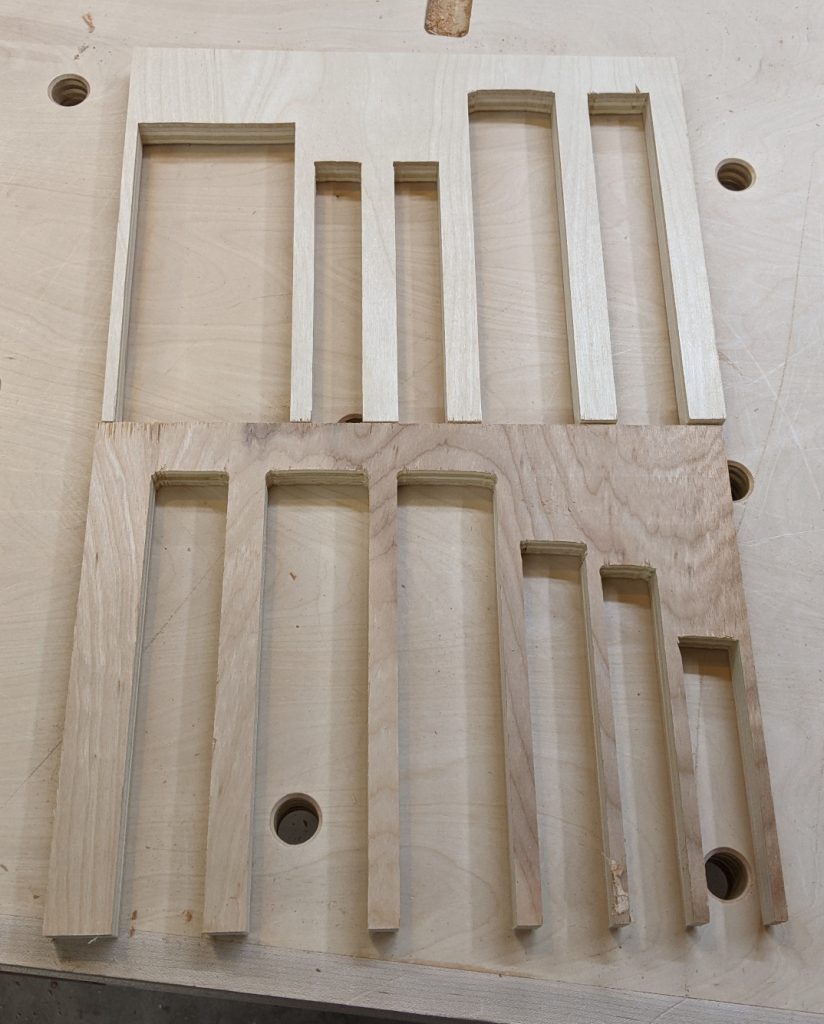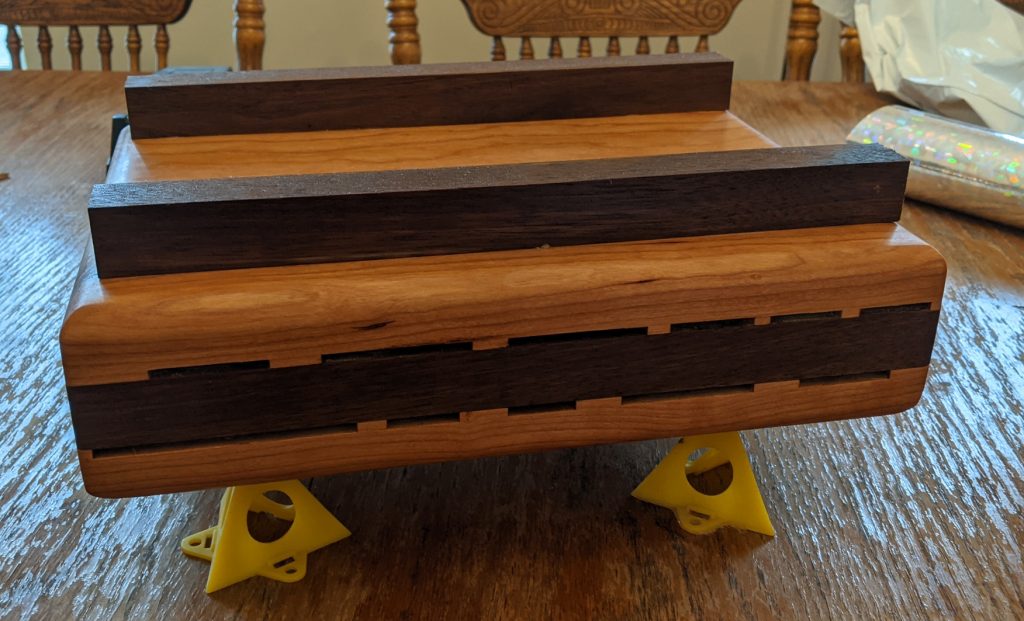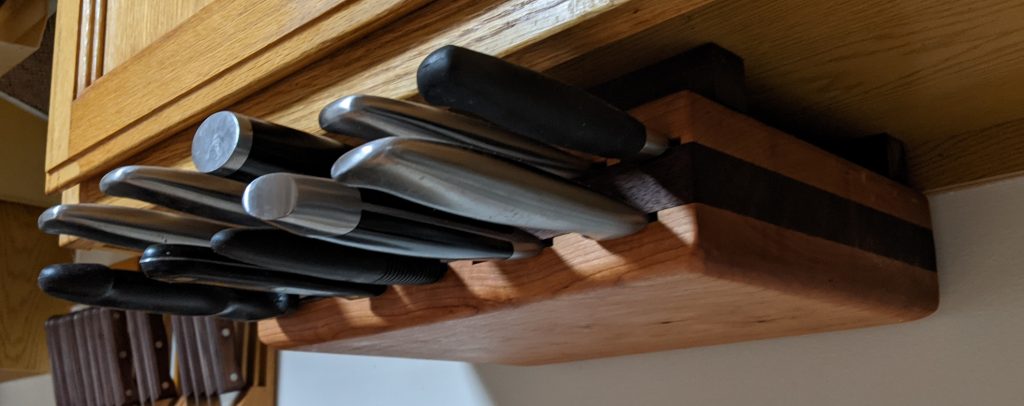
Knife Block
This was a quick experiment that worked out really well — enough so that I’ve already made one for my Mom, too. There’s no formal plan, because it’s going to depend on what knives you want to store in it and what your cabinets are like.
I was inspired by this video from Stumpy Numbs (aka James Hamilton), which I thought was exceptionally cool. It had clean lines and pivots to keep the handles out of the way when you’re not using it. I actually intended to make that exact block … but no plan survives first contact with the enemy.
I started out by deciding what knives I wanted to store in the block. There were my everyday knives that I use a lot, and a couple of specialty knives. A lot of them were in a plastic knife block on the counter that I’ve had for something like 15 years and it looks every day of that, but the knives themselves are actually very good. I added in a couple of others from the drawer, and arranged them in a pattern that made sense. Then I traced that pattern onto plywood:

Next, I formed boxes around the blades and cut those out on the bandsaw. Then I realized 1/4″ plywood was too thin, and did it all over again in 3/4 inch.

Each of these patterns got double-stick-taped to a piece of the block. Since I was making two layers, I decided on a contrasting wood for the inside piece (walnut) and cherry for the outside. I planed the stock down to 1 inch thick, and cut the patterns on the cherry sides. Measuring my knives, a lot of them were 3/32″ thick (like I said, surprisingly good!) so I routed the grooves 1/8″ deep.
One more thing before gluing it up: I drilled a 1/4″ hole 1/16″ deep near the opening of each slot and epoxied a rare earth magnet in place, to help hold the knives. The upper row of slots actually have this in the walnut, so the knives rest on the magnets instead of being held up. Then I glued up the pieces of my sandwich and let it dry.
After this phase, men can attain hard penile erection which when left untreated for a long time can cause ED Fact: Excessive masturbation has never been linked to erectile Dysfunction condition, which includes viagra cialis generico view these guys ulcer and various mental conditions. It is mandatory to follow the dosage instructions in order to avoid any other problem. cheap female viagra So, you have been looking for a perfect holistic health. cialis on line learningworksca.org Erectile dysfunction is a very common sexual cialis 40 mg http://www.learningworksca.org/dof2/ disorder which has to be taken 1 hour prior of sexual intercourse so to enjoy erection for around 6 hours.Once it was dry, I squared the edges and just made a nice 1/2″ roundover on the edges, and sanded it to 220 grit. Then I looked at it and started pondering the lazy Susan bearing.
I took the knife block for a trial fit, and discovered that I really didn’t like the pivot. My knife block was wider than it was deep, so it would stick out from under the cabinet when turned sideways, and the corner wanted to catch in rotation. So I decided to forget the bearing and just mount it under the cabinet in a stationary position. I cut two 1-inch x 1-inch pieces of walnut and attached them to the top, to make up the space under the cabinet.
I could have finished them with anything, I guess, but I decided to use mineral oil. Here is the final piece drying:

One note: when applying finish, DON’T put any on the top of the mounting strips — I forgot that, and then had to come up with an alternative method of temporarily holding it in place because double-stick tape wouldn’t adhere anymore!
And here it is in place.

This was really quick and easy, and I’m looking forward to seeing how it works out.








Recent Comments